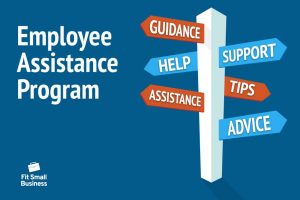An employee assistance program (EAP) offers support for personal and workplace problems that can affect employee output at work and satisfaction and happiness at home. Most EAPs help employees with substance abuse and mental health issues but can also cover family issues, wellness concerns, and retirement planning. As you explore the possibility of an EAP…
What is
What Business Start-up Costs Are Tax Deductible?
For the first year, you can immediately deduct up to $5,000 in start-up costs for expenses like salaries for new hires, executives, and consultants that were incurred prior to the start of business. You can deduct another $5,000 in organizational expenditures like accounting service costs and legal services. Start-up costs and organizational expenditures over $5,000…
Help Desk vs Service Desk: Differences, Use Cases & Providers
A help desk and service desk are both support channels that IT management and software users can access for assistance. Though they sound like they provide the same functions, there are clear-cut differences between a service and a help desk in terms of support objectives, who they’re designed for, and overall capabilities. In this article,…
Learn What a Subdomain Is & How to Use Them
Subdomains are internet addresses (aka URLs) that are part of a primary domain but operate as their own, independent URLs. Businesses often use subdomains when they want to separate one online business function from another or differentiate between audiences. Keep reading to find out how they work and the best ways to use them. After…
What Is an Insurance Endorsement?
Insurance policies are contracts—and insurance endorsements are amendments to the contract that legally change the coverage provided in the policy. An endorsement, sometimes called an insurance rider, either broadens or restricts coverage and gives policyholders the freedom to customize their insurance for an additional cost at any point during the policy term. How Insurance Policy…
What Is the Domestic Production Activities Deduction (DPAD) Calculation?
The Domestic Production Activities Deduction (DPAD) is an expired tax provision that manufacturers and qualifying businesses (qualified producers) could claim for years prior to 2018. The deduction is figured by taking 9% of the lesser of either qualified production activity income or taxable income. The total value of the deduction cannot exceed more than 50%…
What Is the Amortization Deduction on Tax Returns & Which Intangible Assets Qualify?
Amortization is a cost recovery method used to deduct the cost of Section 197 intangible assets over a fixed period. In general, Section 197 intangibles are amortized over a 15-year period using the straight-line method—meaning that the same amount is deducted each year for 15 years. The most common intangible asset is goodwill on the…
What Is Percentage Depletion for Taxes?
Percentage depletion is a tax deduction that helps independent producers and royalty owners account for the reduction of a nonrenewable mineral resource, such as oil, gold, and iron, and to recover the associated cost. Another option for calculating depletion is the cost depletion method. This deduction is very similar to depreciation but is specific to…







